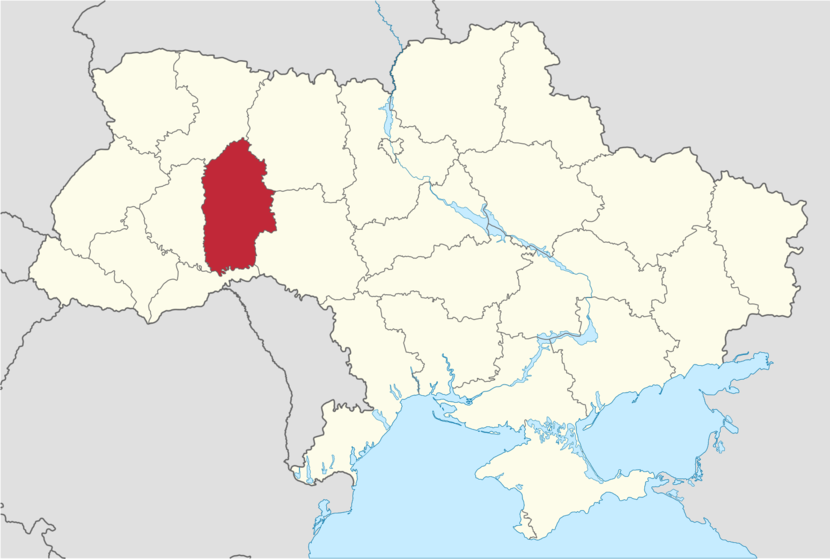Ukraine: Khmelnytskyi Oblast is small but rising in economic power
By Natalia Datskevych. Published Sept. 21. Updated Sept. 21 at 1:14 pm
KHMELNYTSKYI OBLAST, Ukraine — Sandwiched on the map between western and central Ukraine, Khmelnytskyi Oblast at first glance doesn’t really stand out among the country’s regions.
But there’s more to this oblast than meets the eye initially.
Even though it only has 3 percent of Ukraine’s total population, or 1.3 million people, Khmelnytskyi Oblast is one of the few regions in the country that has a positive trade balance, according to Natalia Belyakova, head of the city’s trade chamber.
Some 30,000 enterprises operate in the region and the number increased by 2,000 in 2017 alone.
“In total, around $230 million of foreign investment is operating in the oblast, with the largest investors from the Netherlands, the United States, Poland, Germany, and Cyprus,” Belyakova said.
Vadym Lozovyi, head of Khmelnytskyi Oblast State Administration, nominated to the post by President Poroshenko on May 19, says that he already has results to show.
According to the governor, 100 kilometers of roads in Khmelnytskyi Oblast have already been repaired, as they are vital for business development in the region. However, much more work must be done considering that their total length is more than 2,000 kilometers.
Lozovyi previously worked as a deputy general director of an Epicenter store, a network of home improvement do-it-yourself stores in Ukraine. He now wants to restore the city’s only airport.
“Earlier, certain people had plans to destroy this airport in order to get the land,” Lozovyi told the Kyiv Post on Sept. 11 at his downtown office.
Having better airport infrastructure could also bolster the region’s agriculture sphere, as it has the highest grain harvesting yields — 5.6 tons per hectare, according to Ministry of Agrarian Policy and Food of Ukraine.
But perhaps the bigger potential lies in the region’s smaller entrepreneurs, who are starting to produce non-commodity-based finished products.
Delicacy business
Mykola Gnatiuk is no ordinary farmer, at least for Ukraine. Gnatiuk’s farm, located in the village of Zhyzhnykivtsi, 114 kilometers north of Khmelnytskyi and 332 kilometers west of Kyiv, has already been breeding edible snails for two years.
Snails are not a popular food in Ukraine, so most demand comes from foreign markets such as Western Europe and Asia.
But Ukrainian businesspeople have already caught on to this international taste.
Gnatiuk first started to farm snails as a hobby, but then quickly understood that he could make a business out of it.
Even with his modest 0.1 hectares of land, the farmer managed to raise 1.5 tons of snails and earn 7,000 euros in 2017. This year he plans to increase his production volume to 3.5 tons.
But Gnatiuk’s farm is not breeding the most common edible snail, Helix pomatia, or the “Burgundy snail.” He is growing another breed — Helix aspersa muller.
“Burgundy snails are most popular in France, but they taste like rubber,” Gnatiuk said. “Our snails are much better and they are very popular in Spain, where we plan to sell them this year,” said Gnatiuk.
In Spain, the average price varies from 3 to 5 euros per kilogram of snails, according Gnatiuk. Depending on the quality of the snail, the 3.5 tons of snails will have a value of 10,500 euros to 17,500, excluding shipping costs.
Gnatiuk will not export his harvest to Spain himself, as he doesn’t have the resources to make it profitable, so he will sell them on the domestic market to larger companies.
Together, the country’s main snail farms are already producing 30–40 tons of snails annually, with a few ton more from smaller farmers, which can then be exported.
Gnatiuk will not be producing larger quantities, as raising snails is labor-intensive and he prefers to run a small, family business. The business becomes more profitable after productin exceeds 10 tons, which requires about 0.3 hectares of land, Gnatiuk said.
Read more in Kyivpost article:
More articles on this tipic:
- Khmelnytskyi powers Ukraine’s textile industry
- Khmelnytskyi mayor takes on his city’s premier challenges
